Uzbekistan, along the Silk Road
Spring or Autumn
2nd edition
Travel description
Dates upon request.
We haven’t set fixed dates for this photo workshop yet.
If you’re interested (minimum 2 participants), we’d be happy to organize it for you.
Feel free to contact us with any questions or to express your interest.
Explore the fascinating Uzbekistan through the lens of your camera on a journey that will reveal the history, culture, and timeless beauty of the region, including the evocative Aral Sea.
From Samarkand to Bukhara and Khiva, you will be immersed in the magnificence of turquoise mosques, vibrant markets, and unique local traditions. This trip also includes an exciting visit to the Aral Sea, allowing you to document its historical and environmental impact. Capture desert landscapes, lively bazaars, and centuries-old Islamic architecture, creating photographs that tell stories of change and resilience. Discover the vastness of this land with an authentic experience and deepen your understanding of the region’s history and nature through your photographic art.
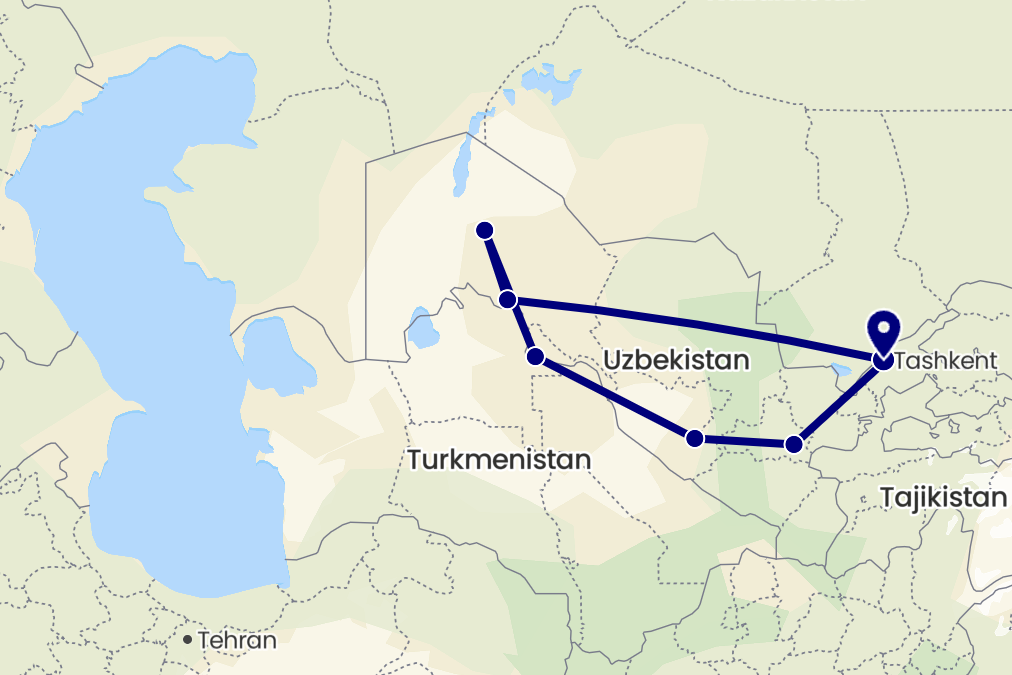
Day 1 – Departure
Evening flight from Milan with a stopover in Istanbul or other connections, arriving Saturday morning in Tashkent.
Overnight journey by plane.
Day 2 – Tashkent
Arrival in the morning at Tashkent International Airport. Entry formalities, passport control, and luggage collection take about one hour.
During the day, visit the main sights of the capital: the Roman Catholic Church, the Lutheran Evangelical Church, the Hazrati Imam complex in the Old City, among the traditional clay houses damaged by the 1966 earthquake, where we will also see the Kaffal Shoshi Mausoleum; the Kukeldash Madrasa and the nearby Chorsu Bazaar, the most famous market in Tashkent, impressive both inside and out, its huge aquamarine dome providing the backdrop to the daily hustle of thousands of buyers in search of the freshest ingredients.
The day will also include a visit to the Soviet-era metro and the Hotel Uzbekistan, one of the iconic brutalist buildings of the city.
Overnight in hotel.
Meals included: breakfast.
Day 3 – Tashkent – Nukus – Aral Sea
Early morning transfer to the domestic airport for a flight to Nukus, arrival in the morning and transfer to the hotel.
Departure towards the Aral Sea, once the fourth-largest lake in the world, fed by the abundant waters of the Amu Darya and Syr Darya rivers. In the 1960s and 1970s, agriculture expanded and Uzbekistan became a major cotton exporter. The downside of this development was the drying up of the Aral Sea and the extreme salinity of soil and water, which led to numerous environmental and demographic problems in the region.
We will reach Muynak, the former Aral Sea port in northern Karakalpakstan. Here we will see the shipwrecks, silent witnesses of the Aral Sea tragedy. Lunch in a local café.
In the afternoon, we continue towards the camp, with a photo stop at the Ustyurt Plateau to admire the spectacular scenery.
Arrival at the yurt camp in the evening. Barbecue dinner around the fire.
Overnight in a yurt (4–6 people per tent), the traditional dwelling of Mongolian nomads.
Meals included: breakfast, lunch, and dinner.
Day 4 – Aral Sea – Nukus
We recommend waking up at sunrise to capture stunning photos of the Aral Sea. Breakfast at the yurt camp. Return to Nukus, with visits along the way. The first stop is the Mizdakhan Necropolis, an ancient cemetery near the ruins of the Gaur Kala fortress (4th–3rd century BC). Continue to Gaur Kala (pagan fortress), a Zoroastrian city with a citadel, a fire altar, and a large nearby cemetery. Even after the Arab invasion and the spread of Islam, the city remained inhabited until the 14th century, and people continued to bury their loved ones at Mizdakhan, considering it a sacred site.
Lunch in a local café. Arrival in Nukus and transfer to the hotel.
Overnight in hotel.
Meals included: breakfast.
Day 5 – Nukus – Khiva
Morning excursion to the Savitsky Museum (State Museum of Arts of the Republic of Karakalpakstan), home to a unique collection of Khorezm and Karakalpak antiquities, Uzbek art, and the second largest collection of Russian avant-garde art after the Russian Museum in St. Petersburg. Its founder, Igor Savitsky, devoted his life to gathering the best works of contemporary artists. In the 1970s, this was a courageous act, as such collections were considered anti-Soviet propaganda.
Transfer to Khiva, stopping en route to visit Ayaz Kala and Toprak Kala, Kushan-period fortresses of ancient Khorezm, once powerful frontier strongholds protecting inhabitants from nomadic raids. Built in the 4th–7th century BC, when Khorezm gained independence, these fortresses stand close to each other on the hills and can be explored briefly. Today they are largely covered by sand. Arrival in Khiva and transfer to hotel.
Overnight in hotel.
Meals included: breakfast.
Day 6 – Khiva – Bukhara
Departure to explore the inner city of Khiva, an open-air museum city.
Our tour will include Ata-Darvaza, the main gate of Itchan Kala, Khiva’s walled citadel, and the massive Kuhna Ark Fortress; the madrasas of Muhammad Rahim Khan and Muhammed Aminhan; the Kalta Minor minaret; the Allakuli Khan Madrasa; and the Tosh-hovli Palace, which housed the harem of 40 concubines.
We will then continue to the Allakuli Khan Caravanserai and Tim (covered bazaar), the Pahlavon Mahmud gates, the mausoleums of Sayid Alauddin and Pahlavon Mahmud, the Islam Khodja minaret and madrasa, and the Jami Mosque and Minaret.
Transfer to Urgench train station for the overnight train to Bukhara, arriving shortly after midnight and transferring to the hotel.
Overnight in hotel.
Meals included: breakfast.
Day 7 – Bukhara – Samarkand
Walking tour of the Old City of Bukhara, which has preserved its medieval atmosphere with narrow streets, stunning monuments, and picturesque markets. Our tour begins with the Ismail Samani Mausoleum; continues with the Chashma Ayub Mausoleum; and then the massive Ark of Bukhara, which since ancient times served as the fortified residence of Bukhara’s rulers and contained everything: palaces, temples, barracks, offices, the mint, warehouses, workshops, stables, an arsenal, and even a prison. We will also visit the Bolo Hauz Mosque.
In the afternoon, visit the Po-i-Kalyan religious complex, including the Mir-i Arab Madrasa (1535), the Juma Mosque (1514), and the Kalon Minaret, built by Karakhanid ruler Arslan Khan in 1127, one of the city’s landmarks.
Shopping lovers will enjoy a walk among the domes of merchants, money changers, and jewelers, and the Tim Abdul Khan covered market (16th century). Next is the Maghoki-Attar Mosque (9th century), one of the oldest surviving mosques in Central Asia (rebuilt in the 16th century), erected on the site of a Zoroastrian fire temple. Its portals are masterpieces of architectural decoration. We will stroll through the Jewish quarter and visit the synagogue. We end the day at Lyab-i Hauz, considered the heart of the Old Town, meaning “ensemble by the pool” (howz is the central pool in Persian architecture). This complex features three monumental structures: the Kukeldash Madrasa (16th century), the Nadir Devanbegi Madrasa (originally a caravanserai, later transformed into a madrasa), and the Nadir Divanbegi Khanqah (16th century), plus the famous Nasreddin Khoja statue, the legendary folk character of the Islamic world.
Mid-afternoon transfer to the station to board the high-speed train to Samarkand. Arrival in Samarkand at 17:30 and transfer to the hotel.
Overnight in hotel.
Meals included: breakfast.
Day 8 – Samarkand
In the morning, explore Samarkand, the Pearl of the Orient and crossroads of the Silk Road, with the famous Registan Square, the heart of ancient Samarkand, made up of three fabulously decorated madrasas (Ulugh Beg, Sher-Dor, and Tilya Kori). The tour continues with the Gur-e Amir Mausoleum, the burial site of Tamerlane and his descendants, with its ribbed blue dome and richly decorated interiors, where the world’s largest piece of jade is displayed.
In the afternoon, we will visit the remains of Ulugh Beg’s Observatory (15th century) and its enormous sextant, which allowed our ancestors to study the stars and chart the night sky. The day ends with a visit to the Mausoleum of St. Daniel, a great prophet and protector of the city, a pilgrimage site for three world religions.
Overnight in hotel.
Meals included: breakfast.
Day 9 – Samarkand
Continue our fascinating tour of Samarkand with a visit to the Shakh-i-Zinda Necropolis, known as the “City of the Dead,” composed of numerous mausoleums, the oldest dating back to the 11th century, burial site of royals and nobles, built by the best architects of the past. Excursion to the Bibi-Khanym Mosque (built between 1399 and 1404), one of Central Asia’s most famous architectural monuments from the Tamerlane era. We then head to the Siyob Bazaar, the oldest bazaar in Samarkand, with its special atmosphere and wide range of products.
Transfer to the station for the high-speed train to Tashkent, arrival in the early evening, and transfer to the hotel.
Overnight in hotel.
Meals included: breakfast.
Day 10 – Return
Morning transfer to Tashkent Airport.
Return flight with stopover in Istanbul, arriving in Milan in the late afternoon.
- English-speaking coordinator
- English-speaking local guide
- Accommodation in 3-star hotels or similar, in a twin or double room (7 nights)
- Accommodation in a yurt (1 night) with 4–6 mixed beds
- Daily breakfast (8), one (1) lunch (drinks not included), and one (1) dinner (drinks not included)
- Domestic flight ticket Tashkent – Nukus in economy class
- Overnight train ticket Khiva – Bukhara in second class (two-berth compartment)
- High-speed train ticket Urgench – Bukhara in economy class
- High-speed train ticket Bukhara – Samarkand in economy class
- High-speed train ticket Samarkand – Tashkent in economy class
- Entrance ticket for the Tashkent Metro
- All transfers according to the program in comfortable tourist-class transport, including airport and train station transfers
- Entrance tickets (for all sites listed in the program)
- Photo and video permits at historical sites (where required)
- Round-trip international flights to/from Uzbekistan
- Visa
- All meals not mentioned
- All alcoholic and non-alcoholic beverages
- Insurance (mandatory)
- Personal expenses
- Tips
- Single room supplement
- Anything not expressly indicated

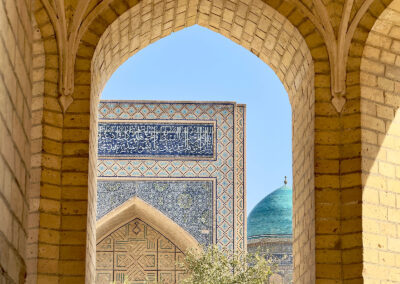
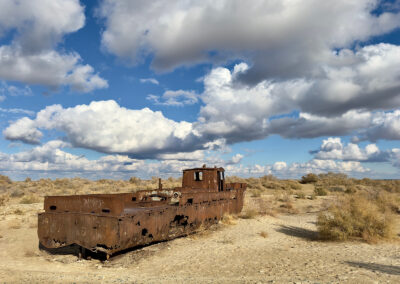
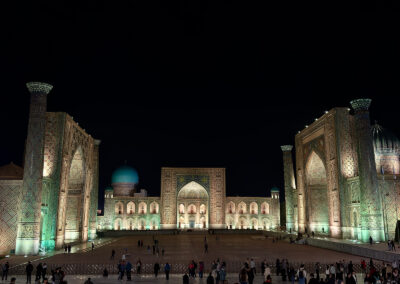
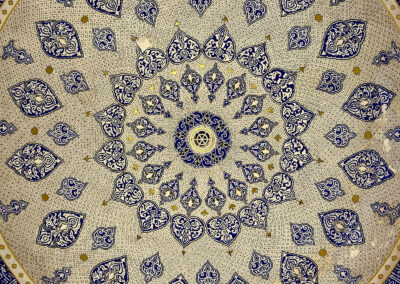
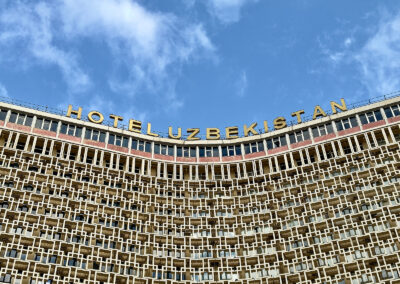
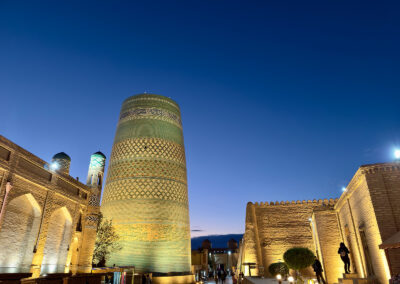
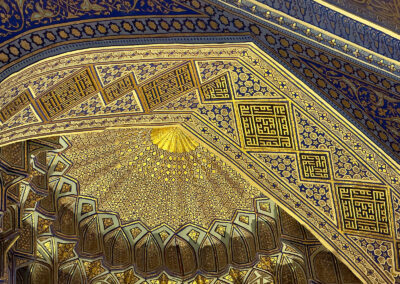
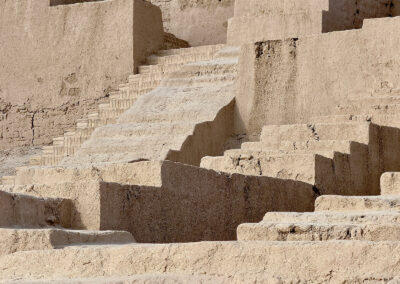
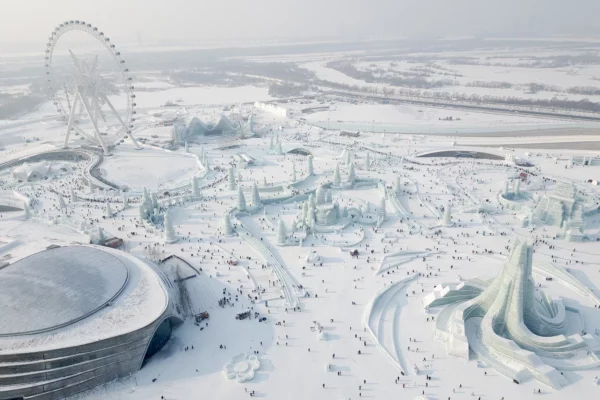
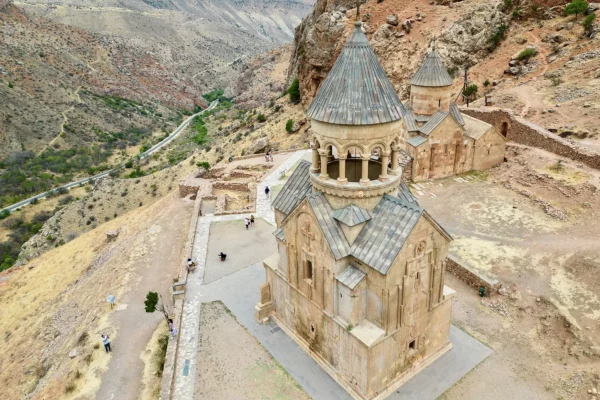
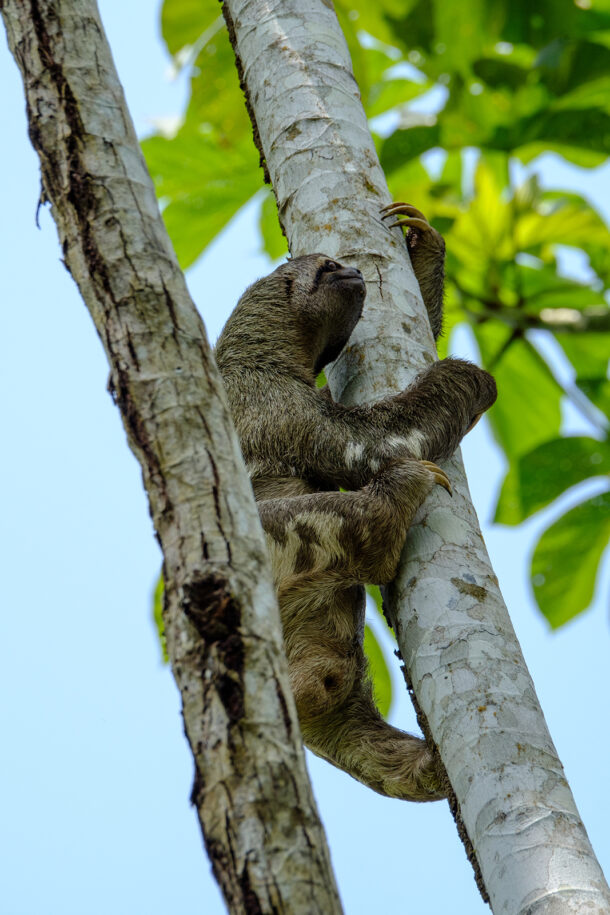
Valentina and Andrea P. –
Traveling to Uzbekistan with Marco Cortesi was a truly unique experience, both for the itinerary (unusual, varied, and excellently organized) and for the company: a small group of expert photographers, accustomed to traveling in a spartan manner, with intelligence, flexibility, and passion. But if I make it longer, I’ll make it shorter. Marco, a geographer as well as a photographer, was able to guide us on a journey of discovery through a country that hides unexpected and pleasant surprises.
Margherita B. –
An extraordinary trip! A fantastic experience that allows you to discover a culture different from our own, learn about the history of the place, and marvel at spectacular landscapes and cities. For me, it was my first vacation to such a faraway place, and I was lucky enough to travel with a small, friendly, and welcoming group, including Marco Cortesi, whom I thank very much for organizing it. It’s a trip that I highly recommend. Thank you all from the bottom of my heart!
Dominique B. –
Organizing a trip like this is never easy. The Uzbek way of life is so different from ours that there are many unknowns. Marco Cortesi, thanks in part to his experience in unusual travel, managed to make this trip as close as possible to what I had dreamed of. I found myself in a wonderful group of people with whom I shared experiences that will remain in my heart for a long time. It was a small but close-knit group, and I would say that traveling in small groups is a great advantage. Some minor (practical) details of this trip need to be sorted out with the local agency, which probably also had to take measures because it was the first time it had worked with Marco, but as I said, these are minor details that, in my opinion, are acceptable due to cultural differences and in any case did not affect the positive outcome. A trip like this should be undertaken with the awareness that you are in a world different from ours, one that has not yet fully opened up to tourism, but soon will: and I doubt that this is a good thing. So, to anyone interested in embarking on this adventure, I can only say to wait eagerly for it to be offered again and to hurry to book. It’s worth it, and you won’t be disappointed. Finally, a big thank you to Marco for accompanying us, coordinating the trip, the guides, etc., but above all for sharing 11 unforgettable days with us, thanks also to his always timely and relevant information about the places we visited. I can say with certainty that he is a “plus” that tour operators or agencies do not have. See you on the next adventure!